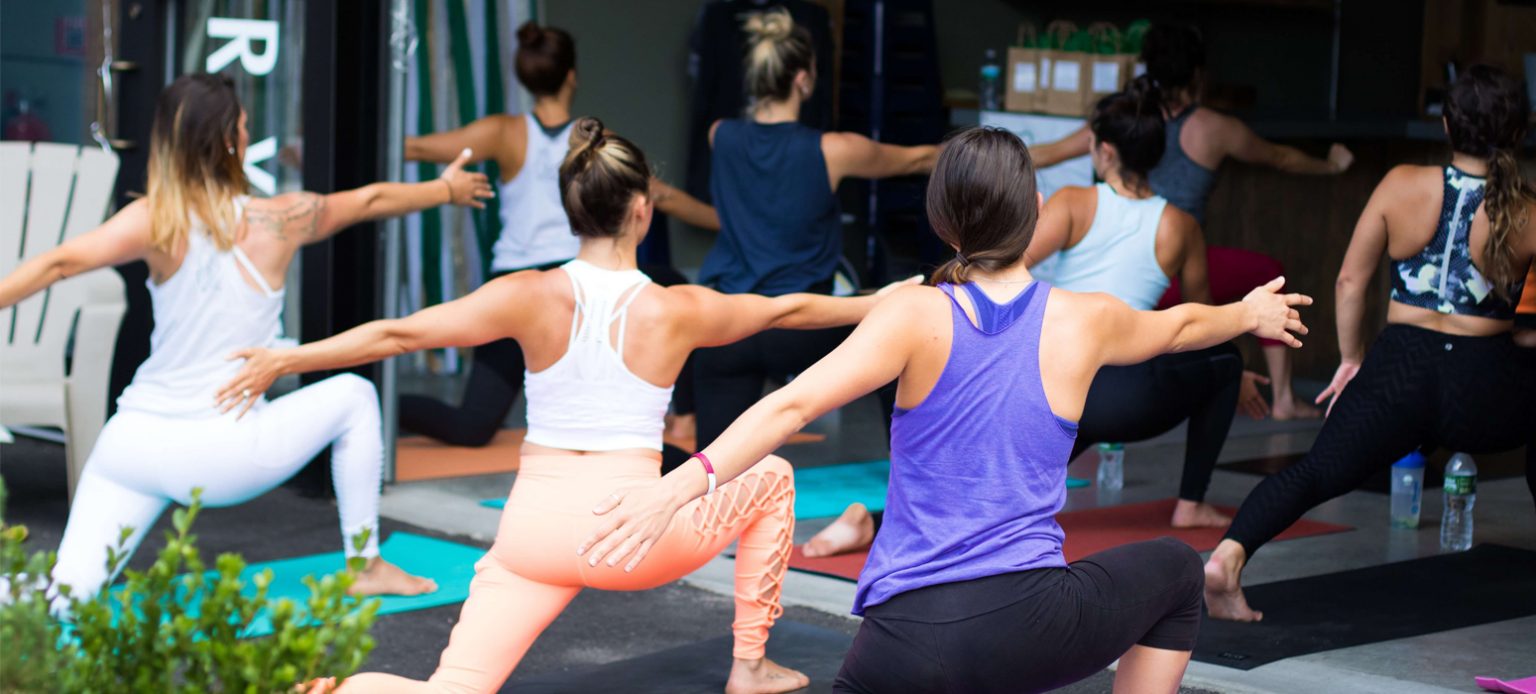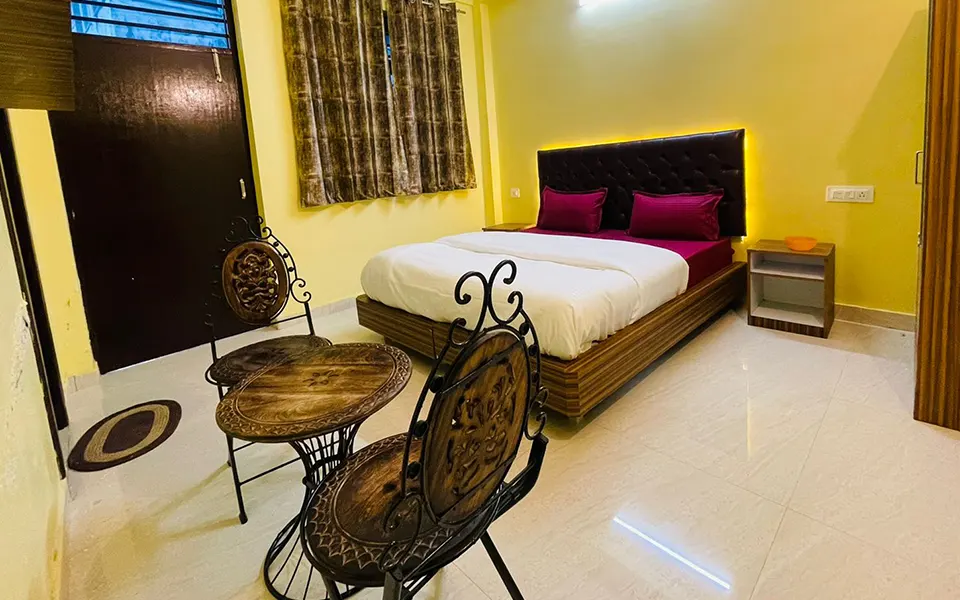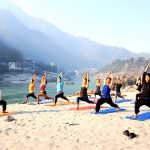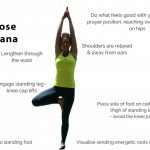What is Trikonasana (Triangle Pose)
Trikonasana is an important posture of yoga science. Trikonasana is a word derived from two words of the Sanskrit language – “Trikon” (त्रिकोणा) meaning Triangle & “Asana” (आसन) which means posture. While performing this asana, the muscles of the body are stretched in three different angles. For this reason, this asana is called Trikonasana or the Triangle Pose in English.
Also, mornings are the ideal time to practice this Asana. If you don’t have time to practice in the morning you can also do it in the evening as it also a good time to practice this asana.
How to perform Trikonasana?
The Triangle Pose is always performed in two parts –
- Facing Left
- Facing Right
Steps To Perfom Trikonasana
- Begin with standing on feet one leg-length apart.
- Unbent the knees.
- Turn the left foot completely outside.
- Right foot less than 45o to inside.
- Keep the heels in line with the hips.
- Spread out the arm to the sides parallel to the ground. Palm facing the ground.
- Extend the trunk as far as possible to the right. While the other arm remains parallel to the ground.
- Left-arm is dropped so that the left-hand reaches the floor to the front of the left foot, with the palm down.
- Right-arm is extended vertically, and the spine and trunk are gently twisted upwards to the right.
- Using the right- arms as a lever, whereas the spine remains parallel to the ground.
- Repeat the same trick on the other side.
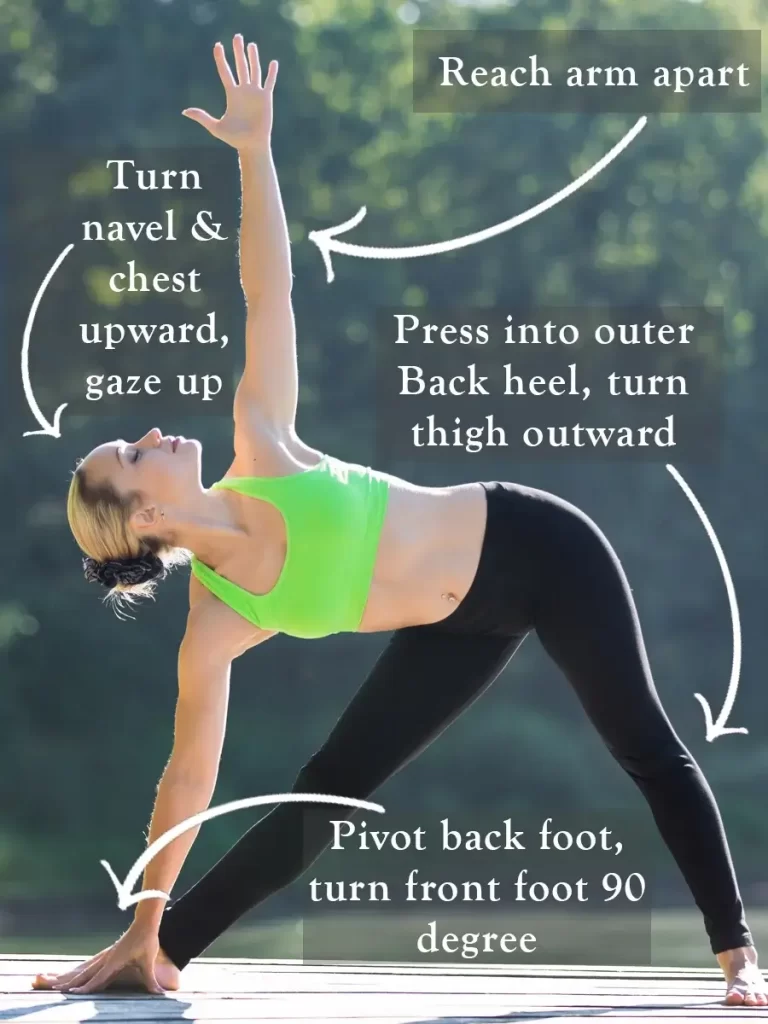
Benefits of Trikonasana
By practicing Trikonasana regularly, you can avail the following benefits –
The physical benefit of practicing Trikonasana
- This exercise helps to strengthen and stretches the legs.
- Trikonasana stretches the hip and spine and increases flexibility.
- Expands the chest and shoulders.
- It Stretches spinal muscles and increases the spinal range of motion.
- Triangle Pose helps to increases neck mobility.
- It helps the body to inhale fresh oxygen and nutrients.
- Strengthens and tones the muscles of the thighs.
- Helps to Relieves upper back tension.
- Stretches calf muscles, hamstrings and hip muscles.
- Improves the sense of balance by keeping the feet and ankles in space.
The Mental benefit of practicing Trikonasana
- Increases mental and physical stability.
- Trikonasana helps to stimulate all the abdominal organs and improves digestion. Reduces stress and cures anxiety.
The triangle pose is a foundational asana, meaning it’s one of the building blocks upon which other poses are constructed. It strengthens the thighs, knees and ankles; stretches the hips, groins, hamstrings and calves; shoulders and chest; stimulates the abdominal organs; improves digestion; firms up your buttocks and lengthens your spine.
Trikonasana Preparatory Poses
The triangle pose has several preparatory poses that you can try before moving on to trikonasana itself. They will help you build strength and flexibility and improve alignment in the triangle pose.
Uttanasana
Utthita means “intense,” “powerful,” or “deliberate;” and “asana” refers to a pose in yoga. Uttanasana is a powerful seated forward bend that can help straighten the spine and increase circulation to the head and neck areas. The pose is more intense than Upavistha Konasana (Wide-Angle Seated Forward Bend) but less intense than Prasarita Padottanasana (Wide-Legged Stride Forward Bend).
To Practice Uttanasana
- Stand with your feet together, arms by your sides.
- Bend your knees slightly, then straighten them again.
- Lift both arms over your head and bring them back down toward your shoulders for a shoulder stretch.
- Repeat this pose with arms in front of you at chest level for an arm stretch.
Adho Mukha Svanasana
Downward-Facing Dog, or Adho Mukha Svanasana, is one of the most common yoga asanas. It’s also one of the easiest to practice once you learn it, making it an ideal introductory pose. Downward Facing Dog stretches your hamstrings and calves, opens your shoulders and chest, and strengthens your arms, back and core.
To Practice Adho Mukha Svanasana
- Bend the knees, and touch the ground with your fingertips.
- Straighten your legs, and lift your hips.
- Roll the shoulders back, relax them down toward your waist and look forward (not up).
- Breathe!
Virabhadrasana I
Virabhadrasana I (Warrior I pose) prepares you for trikonasana by stretching your hamstrings, calves and hips. This position also strengthens your back muscles, shoulders and arms.
How To Perform Virabhadrasana – I
- Stand with feet together and extend your arms to the sides with palms facing forward.
- Bend your knees slightly and lean back slightly at the waist without rounding your spine or bringing in too much curve through it.
- Bring yourself into a deeper squat while keeping weight even on both legs.
- Raise arms overhead; hold this position for 20-30 seconds.
Virabhadrasana II
Virabhadrasana II is the second of three warrior poses. In this specific variation, you will place your front foot in a pigeon stance with your knee bent at a 90-degree angle and rotate your back hip outward so that it faces the ceiling. Keep both knees aligned directly over the ankle joints, shoulders stacked directly above wrists, and gaze steady toward a neutral point in front of your body.
How To Perform Virabhadrasana II
- Keep your back straight. Don't let it sway or curve, but don't have your spine completely vertical either.
- Your hips and shoulders should be aligned, and your weight should be evenly distributed between the front of your foot and the ball of the big toe on each foot. If you find that your toes are sliding when you lift into this pose, try wearing sticky socks or taping them down for added grip. Just don't get too caught up in finding perfect alignment: as long as you're working on keeping everything even and horizontal to maintain balance, then it doesn't matter if one shoulder is higher than another!
- Keep breathing deeply throughout this practice; this will help keep blood flowing through all parts of your body—including those hard-working legs!
- When approaching from a downward dog, bend both knees slightly before lifting into an upward facing dog (and vice versa). This will make it easier to engage core muscles while maintaining balance during transitions between poses without sacrificing form or stability.
Variations of Trikonasana
Baddha Trikonasana (Bound Triangle Pose)
This variation of the simple triangle pose is a bit challanging. To perfom baddha Trikonasana, when you are in the triangle pose, move one of your hand behind your back to touch your hip and other hand under your thigh and touch the fingers of the first hand. This posture is great for strengthening legs.
Baddha Parivritta Trikonasana (Bound Revolved Triangle Pose)
Another advanced variation of the triangle pose, practicing this pose can easily lead to injuries and therefore should be practiced under supervision of a trained yoga professional.
Parivritta Trikonasana (Revolved Triangle Pose)
Practicing this pose will strengthen and stretch your legs and hips. It is a challanging twisting pose and can be difficult for many yoga beginners.
Supta Trikonasana (Reclining Triangle Pose)
Another twisted variation of trikonasana. In this your pelvis remains in one position wherease your shoulder rotates. But it can be difficult as you trun your spine you can easily loose your balance.
Things to Keep in Mind When Practicing Triangle Pose
- Do warm up before doing this asana.
- Make sure to proceed with the asana slowly and steadly otherwise its easy to loose balance.
- Don't perfom trikonasana if you are suffering from migraine, high blood pressure, diarrhoea or back injuries.
Contents
What is Trikonasana (Triangle Pose)How to perform Trikonasana?Steps To Perfom TrikonasanaBenefits of TrikonasanaThe physical benefit of practicing TrikonasanaThe Mental benefit of practicing TrikonasanaTrikonasana Preparatory PosesUttanasanaAdho Mukha SvanasanaVirabhadrasana IVirabhadrasana IIVariations of TrikonasanaBaddha Trikonasana (Bound Triangle Pose)Baddha Parivritta Trikonasana (Bound Revolved Triangle Pose)Parivritta Trikonasana (Revolved Triangle Pose)Supta Trikonasana (Reclining Triangle Pose)Things to Keep in Mind When Practicing Triangle Pose

